Felipe Vilanova
Detecting Personality and Emotion Traits in Crowds from Video Sequences
Apr 27, 2021
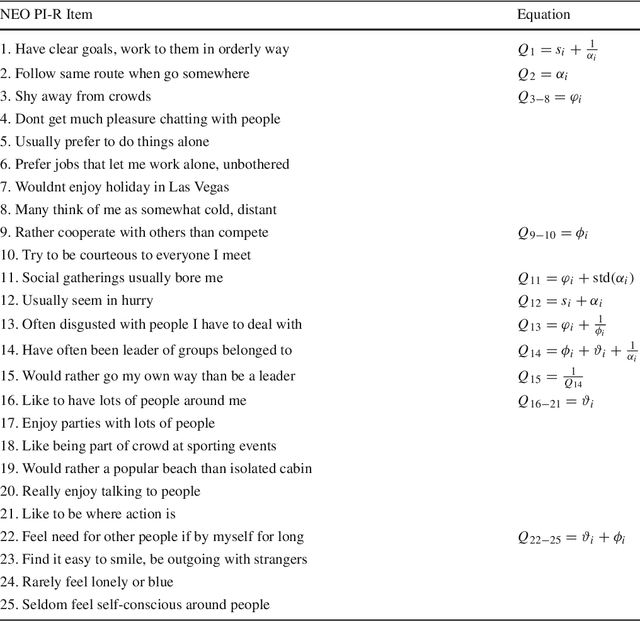
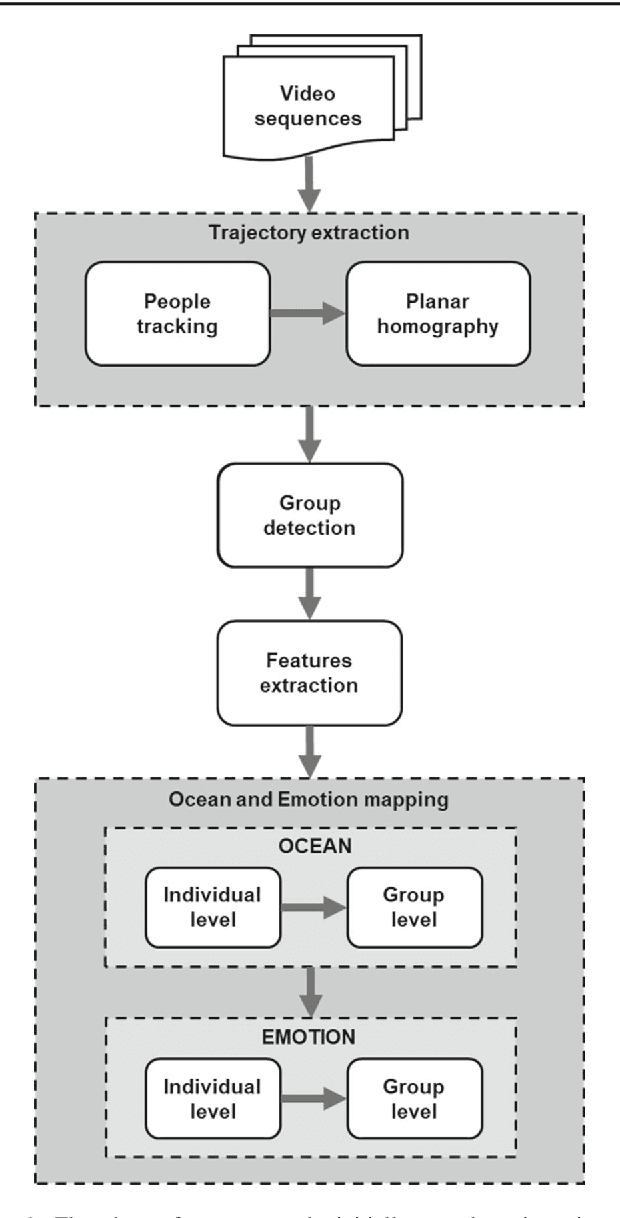
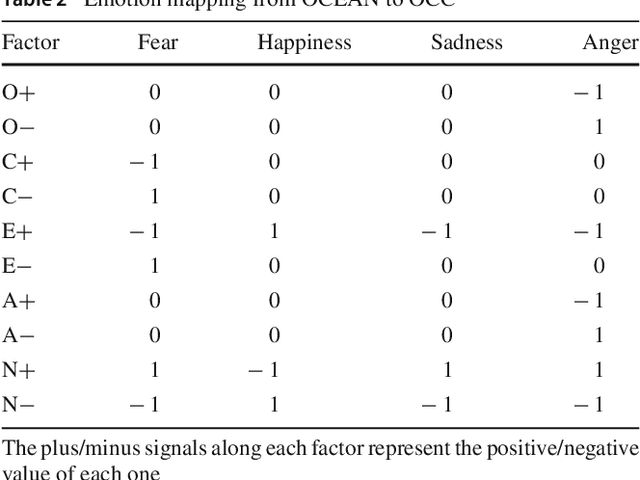
Abstract:This paper presents a methodology to detect personality and basic emotion characteristics of crowds in video sequences. Firstly, individuals are detected and tracked, then groups are recognized and characterized. Such information is then mapped to OCEAN dimensions, used to find out personality and emotion in videos, based on OCC emotion models. Although it is a clear challenge to validate our results with real life experiments, we evaluate our method with the available literature information regarding OCEAN values of different Countries and also emergent Personal distance among people. Hence, such analysis refer to cultural differences of each country too. Our results indicate that this model generates coherent information when compared to data provided in available literature, as shown in qualitative and quantitative results.
Investigating Cultural Aspects in the Fundamental Diagram using Convolutional Neural Networks and Simulation
Sep 30, 2020Abstract:This paper presents a study regarding group behavior in a controlled experiment focused on differences in an important attribute that vary across cultures -- the personal spaces -- in two Countries: Brazil and Germany. In order to coherently compare Germany and Brazil evolutions with same population applying same task, we performed the pedestrian Fundamental Diagram experiment in Brazil, as performed in Germany. We use CNNs to detect and track people in video sequences. With this data, we use Voronoi Diagrams to find out the neighbor relation among people and then compute the walking distances to find out the personal spaces. Based on personal spaces analyses, we found out that people behavior is more similar, in terms of their behaviours, in high dense populations and vary more in low and medium densities. So, we focused our study on cultural differences between the two Countries in low and medium densities. Results indicate that personal space analyses can be a relevant feature in order to understand cultural aspects in video sequences. In addition to the cultural differences, we also investigate the personality model in crowds, using OCEAN. We also proposed a way to simulate the FD experiment from other countries using the OCEAN psychological traits model as input. The simulated countries were consistent with the literature.
A Software to Detect OCC Emotion, Big-Five Personality and Hofstede Cultural Dimensions of Pedestrians from Video Sequences
Aug 18, 2019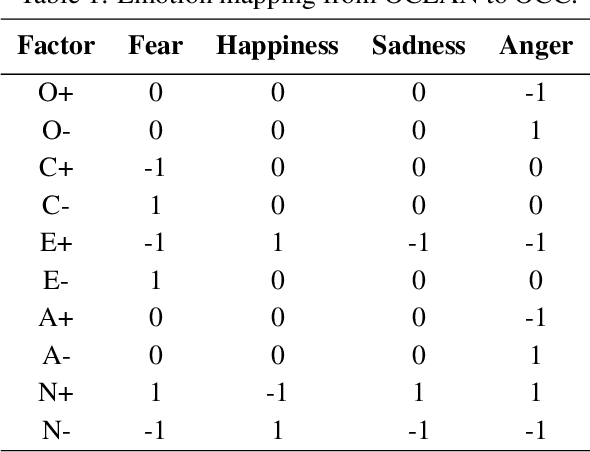
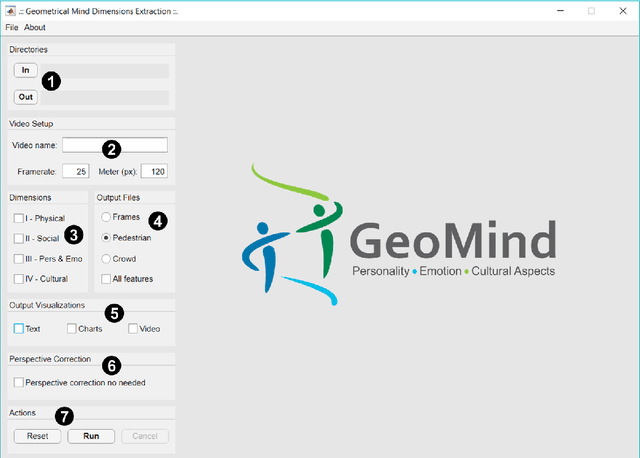

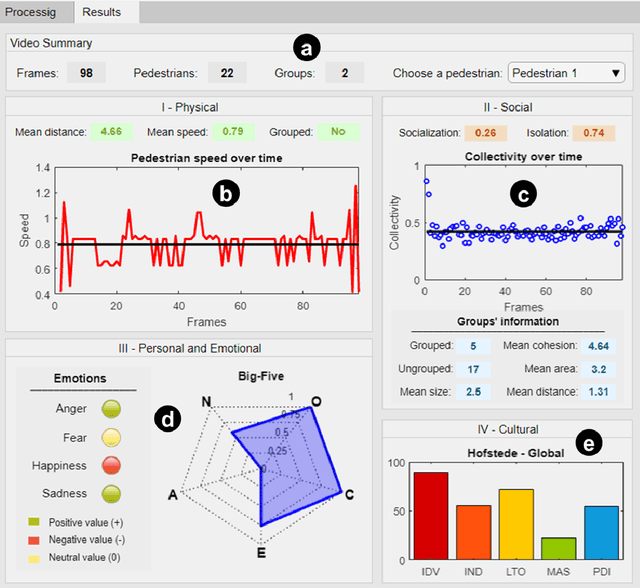
Abstract:This paper presents a video analysis application to detect personality, emotion and cultural aspects from pedestrians in video sequences, along with a visualizer of features. The proposed model considers a series of characteristics of the pedestrians and the crowd, such as number and size of groups, distances, speeds, among others, and performs the mapping of these characteristics in personalities, emotions and cultural aspects, considering the Cultural Dimensions of Hofstede (HCD), the Big-Five Personality Model (OCEAN) and the OCC Emotional Model. The main hypothesis is that there is a relationship between so-called intrinsic human variables (such as emotion) and the way people behave in space and time. The software was tested in a set of videos from different countries and results seem promising in order to identify these three different levels of psychological traits in the filmed sequences. In addition, the data of the people present in the videos can be seen in a crowd viewer.
How much do you perceive this? An analysis on perceptions of geometric features, personalities and emotions in virtual humans
Apr 24, 2019
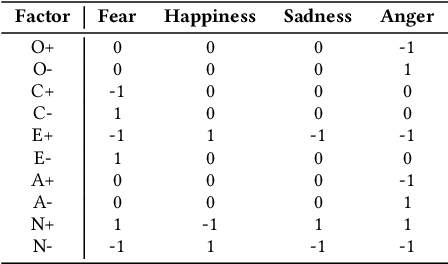


Abstract:This work aims to evaluate people's perception regarding geometric features, personalities and emotions characteristics in virtual humans. For this, we use as a basis, a dataset containing the tracking files of pedestrians captured from spontaneous videos and visualized them as identical virtual humans. The goal is to focus on their behavior and not being distracted by other features. In addition to tracking files containing their positions, the dataset also contains pedestrian emotions and personalities detected using Computer Vision and Pattern Recognition techniques. We proceed with our analysis in order to answer the question if subjects can perceive geometric features as distances/speeds as well as emotions and personalities in video sequences when pedestrians are represented by virtual humans. Regarding the participants, an amount of 73 people volunteered for the experiment. The analysis was divided in two parts: i) evaluation on perception of geometric characteristics, such as density, angular variation, distances and speeds, and ii) evaluation on personality and emotion perceptions. Results indicate that, even without explaining to the participants the concepts of each personality or emotion and how they were calculated (considering geometric characteristics), in most of the cases, participants perceived the personality and emotion expressed by the virtual agents, in accordance with the available ground truth.
Using Big Five Personality Model to Detect Cultural Aspects in Crowds
Mar 05, 2019
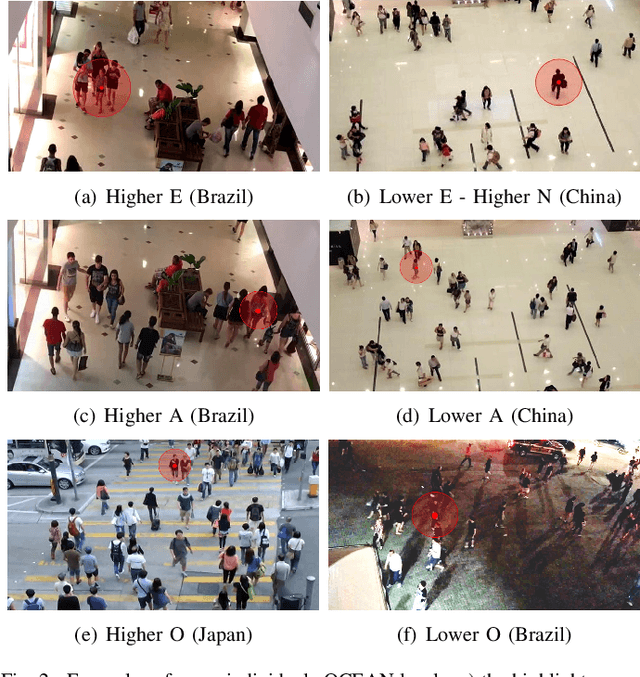
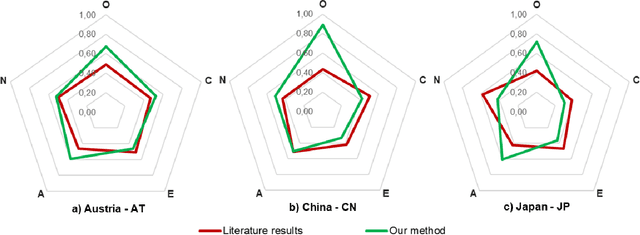
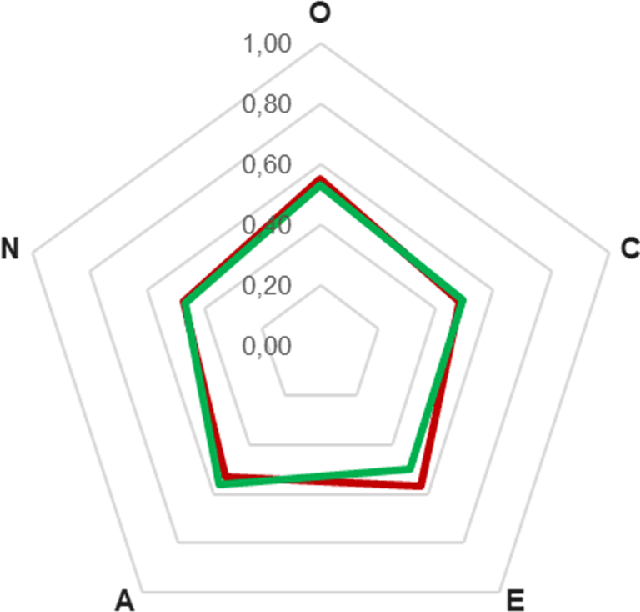
Abstract:The use of information technology in the study of human behavior is a subject of great scientific interest. Cultural and personality aspects are factors that influence how people interact with one another in a crowd. This paper presents a methodology to detect cultural characteristics of crowds in video sequences. Based on filmed sequences, pedestrians are detected, tracked and characterized. Such information is then used to find out cultural differences in those videos, based on the Big-five personality model. Regarding cultural differences of each country, results indicate that this model generates coherent information when compared to data provided in literature.
 Add to Chrome
Add to Chrome Add to Firefox
Add to Firefox Add to Edge
Add to Edge